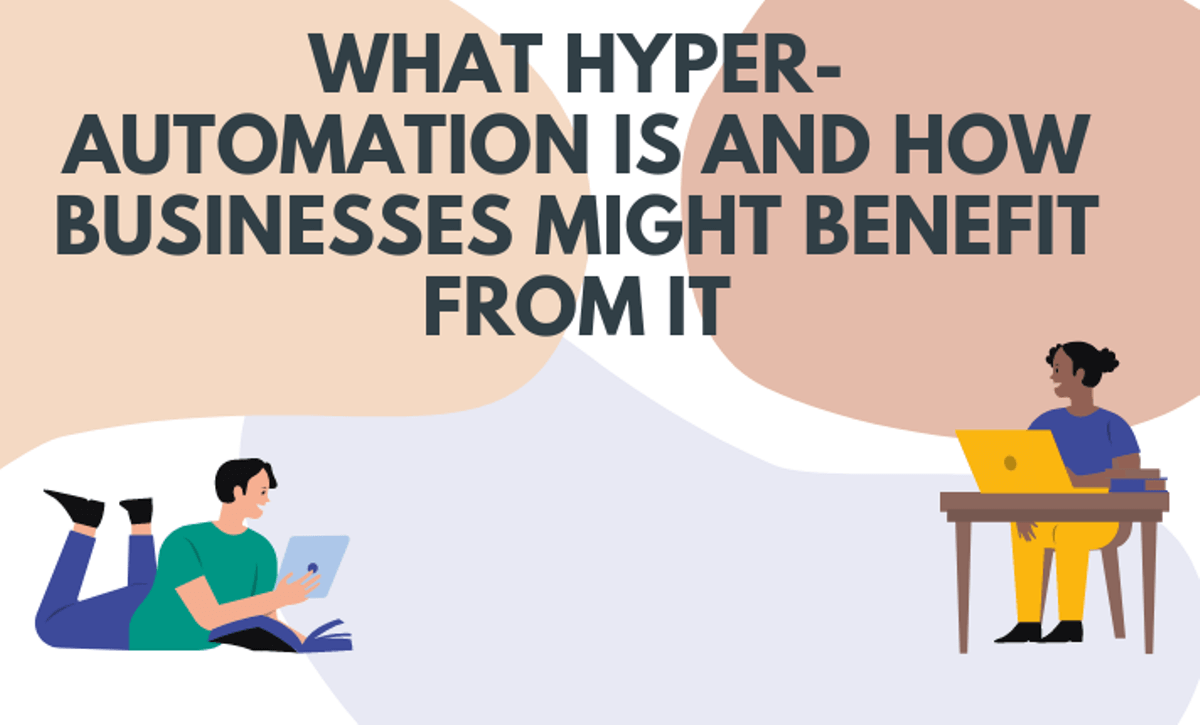In today’s commercial environments, process automation is changing from merely boosting productivity and efficiency to a more revolutionary phenomenon dubbed hyper-automation. According to Gartner, hyper-automation is a business-driven, disciplined method used by enterprises to quickly discover, validate, and automate as many business and IT activities as possible while utilizing various tools and technologies.
They consist of low-code/no-code tools, integrated platforms as a service, robotic process automation (RPA), machine learning (ML), robotic process automation (RPA), business process management (BPM), and AI (iPaas).
Whole Organizations Are Affected by Hyperautomation
Hyperautomation is particularly intriguing since it affects a wide range of organizations, networks, and job functions that previously required some level of human intervention and cognition. It eliminates lower-level cognitive processes, allowing regular people to concentrate on the most vital creative tasks. It is an innovation revolution that will significantly impact all types of enterprises.
Also Read: Tutorial Help With Research Project
It estimates that by implementing these crucial technologies, operating expenses might be reduced by at least 30% by 2024. Healthcare, insurance, travel, and government organizations are among the most noticeable sectors to be impacted; these sectors rely on disjointed legacy systems and take a long time to make decisions.
Hyperautomation improves task completion by making end-to-end procedures far more intelligent and sophisticated. The relevant technologies exist in a variety of shapes and sizes, including:
Continuous data analysis, the discovery of trends, and the use of machine learning algorithms to enable more precise predictions and results.
Communications can be promptly interpreted by natural language processing (NLP) systems that comprehend spoken and written language.
They are improving the conversion of photos into text through optical character recognition (OCR).
Principal Advantages That Hyperautomation Brings to Businesses

Through hyper-automation, both structured and unstructured data are connected between different systems and processes. This facilitates more accessible data analysis and promotes more expedient decision-making. The following are some of the most important benefits:
Data Exchange
In addition to making data access faster and more effective, hyper-automation simplifies integrating data across different business lines, systems, and application domains. An HR department, for example, can benefit from combining data from hiring, onboarding, and salary payments to provide a complete picture of the actions of the entire department. This can be accomplished by linking the data.
Gaining Access to Information in Real-Time
In cross-enterprise efforts, organizations can see what has been requested, who has been assigned it, who made a mistake and how to repair it, and who made it and how to solve it. Additionally, organizations can see who made a mistake and how to fix it.
Productivity
Instead of manually entering data, printing, and scanning client information, staff members can spend more time, thanks to hyper-automation, on activities that provide value for the company. It eliminates manual email communication across departments such as HR and IT to provide a more positive experience for employees. Hyperautomation is digitizing activities across departments to enable end-to-end automation procedures such as procure-to-pay.
How the Most Important Industries Will Be Affected by Hyperautomation
Many different sectors are beginning to use hyper-automation, making it possible for enterprises to speed up the rate at which they increase their operational efficiency. The following are some examples:
Banking
Regulatory compliance, marketing, sales, distribution, customer service, payments, loans, and back-office operations are just a few areas where hyper-automation can benefit banks. RPA takes care of lower-level chores so teams may enhance strategic decision-making, consulting services, risk and opportunity identification, and data reporting in real-time. By converting manually written customer information into electronic versions for quicker analysis and action, intelligent character recognition, for instance, enables banks to enhance their “Know Your Customer” (KYC) operations and compliance. Time, money, and human involvement are all saved via hyper-automation.
Healthcare hyper-automation can develop intelligent billing systems by gathering and combining billing information from many departments without a person’s involvement. Intelligent chatbots can help automate bill submissions, and AI and RPA can identify medical policy coverage and conditions, for instance.
Also Read: What Web Technologies Should I Learn?
The transcription of speech into text is made possible by ML-enabled voice recognition, which can process thousands of cases simultaneously. The final consequence of these hyper-automation processes is the improvement of back-office and customer-facing operations, improving the entire customer experience and increasing operational efficiencies.
Call centers and other forms of customer service
Another example from the real world is robotic process automation (RPA) and artificial intelligence (AI) in contact centers to automate manual operations such as mouse clicks and application launches to assist agents in quickly retrieving customer information from various systems. When a customer phones in, a representative can get a more comprehensive customer profile without repeatedly navigating between different apps or displays. These operations have the potential to be expanded to include more service-related duties, such as customer relationship management, tracking of shipments, and project automation.
To summarise, automate as much as you possibly can:
When it comes to hyper-automation, the most important thing to remember is that anything that can be automated ought to be automated. When highly advanced intelligence tools such as AI, ML, RPA, and NLP are combined, the sky’s the limit regarding how much profit your firm may receive from the combination. When an organization implements hyper-automation, it guarantees that every intelligent tool is optimized to deliver the best possible business benefit to the entire organization.










